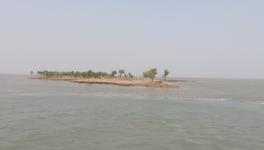Kerala: LDF Govt Justifies Demand Seeking Exemption from ESZ Around Protected Areas
Representational Image. Image Courtesy: PTI
The Kerala government’s review petition on the Supreme Court’s judgement in June 2022 to protect forests and the mandatory requirement of buffer zones, has sparked a debate. However, the Left Democratic Front (LDF) government feels some areas in Eco Sensitive Zones (ESZs) need to have smaller buffer zones to protect the rights of forest dwellers and Scheduled Tribe (Sts) and prevent their displacement.
‘Each protected forest, that is national park or wildlife sanctuary must have an ESZ of minimum one kilometre measured from the demarcated boundary of such protected forest in which the activities proscribed and prescribed in the Guidelines of 9th February 2011 shall be strictly adhered to’, reads part 44 (a) of the Supreme Court (SC) judgement pronounced on June 3, 2022 on a public interest litigation (PIL) seeking to protect forests across the country.
Kerala, with 23 wildlife sanctuaries and national parks raised concerns over the buffer zone requirement considering the possible massive displacement given the large area falling under the zone as per the ruling.
In its review petition, the Kerala government has pointed at the higher population density and deprivation of rights to people belonging to Sts and forest dwellers.
The LDF government has proposed a zero to 1 km buffer zone in an attempt to reduce the impact on the public residing adjacent to the wildlife sanctuaries and the national parks.
Much hue and cry is being created by the Opposition parties in Kerala against the LDF government in the buffer zone issue, though both the Congress and Bharatiya Janata Party (BJP) led governments in the centre have recommended similar guidelines since 2002.
JUDGEMENT UPHOLDING UPA GOVT GUIDELINES
The judgement of the SC on the issue was on the PIL on protecting the forest areas in Nilgiris district of Tamil Nadu filed in 1995, but the scope of the writ was enlarged to protect the forest lands across the country.
The Union ministry of environment and forest (MoEF), on February 9, 2011 published the guidelines with a clause to keep the ESZs as flexible after stiff opposition from several state governments.
The guideline further included, 'However, as a general principle the width of the eco sensitive zone could go up to 10 km around a protected area (PA) as provided in the Wildlife Conservation strategy 2002'.
The Wildlife Conservation Strategy 2002 was proposed by the BJP-led National Democratic Alliance (NDA). Point (9) of the strategy reads as follows:
“Lands falling within 10 km of the boundaries of National Parks and Sanctuaries should be notified as eco-fragile zones under section 3(v) of the Environment (Protection) Act and Rule 5 Sub-rule 5(viii) & (x) of the Environment (Protection) Rules”.
P Rajeev, the minister for industries and law in an article for Malayalam daily, Deshabhimani, pointed to the role of both BJP and Congress for their roles in setting up the guidelines for ESZ.
“The UPA regime wanted the 10 km buffer zone in 2011 which was framed by the BJP led NDA government in the vision document published in 2002. The SC has upheld the guidelines proposed by the union government”, he claimed.
WHY KERALA IS SEEKING EXEMPTION?
Kerala is home to 23 wildlife sanctuaries, national parks and community reserves has raised alarms over the outcome of the buffer zone restrictions. Around 3213.24 sq km area in the state falls under PA, which amounts to 27% of the forest area and 8.26% of the geographical area. The state has an effective forest area of 9400 sq km.
The review petition filed by the state has pointed to the higher population density, (859 per sq km against the national rate of 464 per sq km) and the deprivation of lands to the ST community.
The government has submitted that the tribal communities, forest dwellers and other sections of the population close to the PAs would be affected the most.
Rajeev has pointed to the SC judgement on providing exemption to the buffer zone even in the PAs. The section 44(f) of the judgement reads as follows:
“The minimum width of the ESZ may be diluted in overwhelming public interest but for that purpose the State or Union Territory concerned shall approach the central empowered committee (CEC) and MoEF& Climate Change (CC) and both these bodies shall give their respective opinions/recommendations before this Court. On that basis, this Court shall pass an appropriate order”.
“There is no specific time limit for completing this exercise. Based on this clause, the government of Kerala has submitted the draft to the empowered committee, the concerned ministry and the SC”, Rajeev wrote.
The LDF government, in the cabinet meeting held in October 2019 decided to adopt a 1 km buffer zone around the PAs, but modified the decision to exempt human settlements completely in July 2022.
“The SC will hear the review petition filed by Kerala and the union government seeking amendments to the judgement on January 11, 2023. The LDF government is intervening to ensure a zero buffer zone in populated areas citing the characteristics of the state”, Rajeev included.
The LDF government in Kerala is the lone state to approach the SC with a review petition and the only state to pass a resolution in the state assembly seeking exemption for populated areas.
The LDF has accused both BJP and Congress-led UDF of misleading the people by spreading wrong information on the efforts made by the government of Kerala.
Get the latest reports & analysis with people's perspective on Protests, movements & deep analytical videos, discussions of the current affairs in your Telegram app. Subscribe to NewsClick's Telegram channel & get Real-Time updates on stories, as they get published on our website.
























